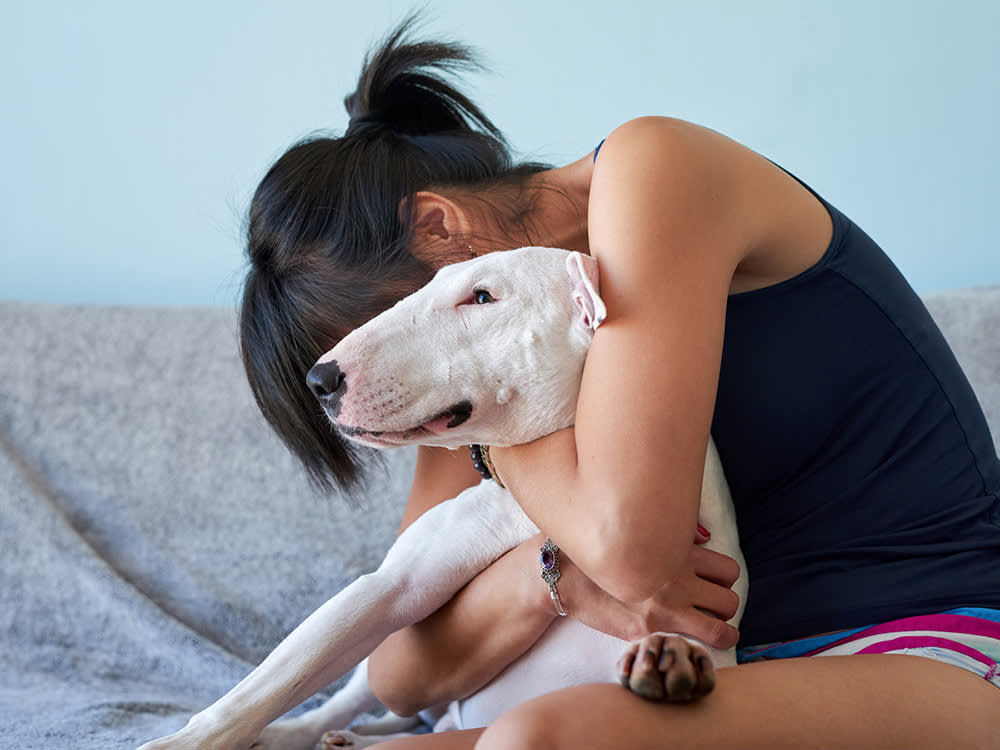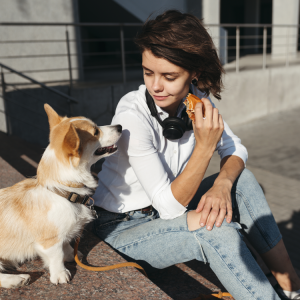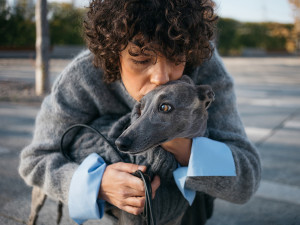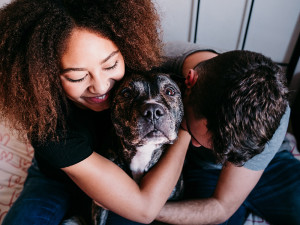To Cry Is Human—and Apparently Canine
Time to whip out The Notebook for a little doggie movie night.
We treat our dogs like (very cute) people — when it looks like they’re smiling we coo over how adorable it is. When they put their heads in our laps, we feel the love. When they cry actual tears, we...wait, what? That’s a thing? Apparently, it is.
Takefumi Kikusui’s Standard Poodle was nursing her puppies six years ago when he observed the Poodle’s eyes welling up with tears. The tears didn’t roll down her face as they do when humans cry, but her eyes were clearly wet. Her face looked different because of the tears, and it seemed to happen whenever she was nursing her puppies. In addition to being a dog parent, Dr. Kikusui is a faculty member in the Department of Veterinary Medicine at Azabu University in Azabu Saitama, Japan.
As with so many great studies in science, the original idea for Kikusui’s most recent published study, “Increase of tear volume in dogs opens in new tab after reunion with owners is mediated by oxytocin” was based on an observation — in this case, the teary eyes of his nursing Poodle. In a study exploring the connection between emotions and the production of tears in dogs, he and his fellow researchers came to three important conclusions.
Trick question: All dogs are perfect! But find out which type is the best fit for you.
Dogs produce tears when reuniting with their owners after a separation of many hours.
Dogs tear up more when reuniting with their parents than with other humans they know. The amount of tearing up observed during reunions with parents is also more than the amount produced when dogs are just hanging out with their parents at home. The increase in canine tears when people reunite with their dogs suggests an emotional cause of the tears.
Emotions both sad and happy (and even those of rage and frustration) can make humans cry. Everybody knows that’s a thing. What makes this new research such a big deal is that it’s the first study showing a connection between emotion and tears in another species.
How much do you spend on your pet per year?
Although the increased tear production is small, it is noticeable. Kikusui emphasized that it was a difference in visual appearance that prompted his research in the first place: “If the owners are sensitive, they can recognize it. Initially, my female Standard Poodle got pregnant, and she gave milk to the puppies (meaning higher oxytocin secretion), her eyes were shining, and [her] face became cuter; we recognized it and started this experiment.
The “love hormone” oxytocin causes the production of tears in dogs who are feeling happy.
Oxytocin applied to dogs’ eyes results in more tears than when a control substance of a similar peptide is applied to the eyes. Oxytocin — famously called the “love hormone” — plays a huge role in romantic relationships, the bonding of mothers and babies, and the strong bond between people and dogs.
Oxytocin promotes feelings of love and tranquility. Petting dogs and caring for them increase oxytocin levels in both people and dogs. Nursing also causes the release of oxytocin, which is why Kikusui says it was seeing his dog’s tears while nursing her puppies “that gave [him] the idea that oxytocin might increase tears.”
That oxytocin may be the cause of the tears further supports the idea that dogs are producing more tears in response to their emotions.
People feel more love and compassion toward dogs with misty eyes.
Photos of dogs with artificial tears prompt more desire in humans to take care of them than photos of dogs without those tears. People responded more positively to misty-eyed dogs, which means it makes sense for dogs to produce them. When tears lead to love, nurturing, and possibly steak, the tendency for tears to form in response to the beloved people will increase — that’s just the way evolution works.
Eye contact has already been shown to enhance our relationship. Gazing at one another leads to increased levels of oxytocin, which leads people to take care of dogs. This increases oxytocin levels, and the positive feedback loop continues. This experiment suggests that the extra tears, shown to prompt more loving feelings and the urge to care for the dogs who have such tears, may be the stimulus that leads to increased oxytocin and increased feelings of love in people when they lovingly look at dogs.
Dogs shed tears of joy.
“We found that dogs shed tears associated with positive emotions,” Kikusui says. “Their tears might play a role in the deepening of mutual relationships and further leading to interspecies bonding.”
The idea that dogs cry happy tears is new information. Prior to this study, there was no evidence connecting canine tears to feelings. If the thought of your dog’s tears stemming from happy emotions has your eyes glistening even a little, you can thank science for a deeper understanding of true love!
References:
Increase of Tear Volume in Dogs After Reunion With Owners Is Mediated By Oxytocinopens in new tab











